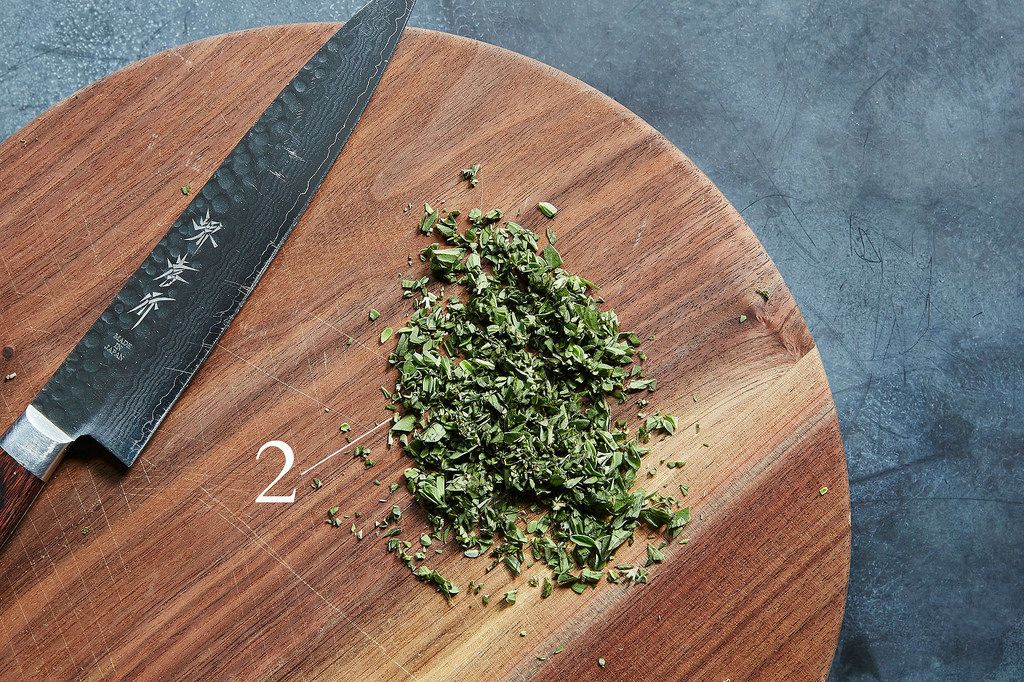Popular on Food52
17 Comments
Lynn M.
January 13, 2022
I've always loved how well marjoram complements winter squashes. While everyone seems to flavor these with sweet spices like cinnamon and ginger (bor-ing!), marjoram really seems to enhance the sweet and savory flavors of these veggies. I also make a very simple pureed yellow summer squash soup with marjoram, chicken stock, white onion and a dash of heavy cream. Delicious.
Smaug
January 12, 2022
The name Origanum Majoranum is actually the original name of the plant given by Linnaeus, and the only name I've ever heard used. I did find a reference to the name "Majorana Hortensis" in a 1922 edition of Bailey's "Cyclopedia of Horticulture", a name proposed by 18th century German botanist Conrad Moench that (so far as I can tell) never caught on. It's a moderately hardy plant, can be harvested year round in California.
Smaug
January 12, 2022
Should note also that these plants are pretty variable as far as flavor from seed, but grow quite easily from cuttings- if you find a clone that you particularly like, treasure it.
Matias A.
September 15, 2017
Just a quick comment. What I've read about zaatar is that is a blend of spices including sumac, sesame seeds, salt and dried leaves of the zaatar plant which carries the same name as the spice blend. It is of course in the oregano family but it's endemic to the eastern mediterranean. The Lebanese LOVE this herb and some people think it is the same named in the bible
Smaug
January 12, 2022
There doesn't seem to be any great consistency in either the blends or the use of the plant name, but origanum vulgare (common oregano) is one of the herbs referred to as zaatar. The blends contain many relatives from the genera origanum, thymus and satureja. These plants are all from the family labiatae (now lamiaceae) which includes most of the "hard" herbs used in European cuisine- thymes, oreganos, savories, sages, rosemary etc.
AntoniaJames
May 4, 2015
I really like how you've shown marjoram on the cutting board next to thyme, because the two go so well together. I often -- actually, I should say I almost always -- use it with thyme.
Examples:
Summer corn and fish chowder https://food52.com/recipes/6337-summer-corn-and-fish-chowder
Shepherd's pie: https://food52.com/recipes/33318-scrummy-shepherd-s-pie
Roasted vegetables: https://food52.com/recipes/7836-roasted-autumn-vegetables-with-fresh-herbs
Herbed Frittata: https://food52.com/recipes/31134-herb-feta-and-quinoa-filled-frittata
I also use it, in moderation, as it's a strong herb raw, in the quinoa and corn salad: https://food52.com/recipes/22823-quinoa-salad-with-corn-and-fresh-herbs
And marjoram practically defines this lentil soup, one of the first recipes I posted here, in December 2009: https://food52.com/recipes/2348-lentil-and-sausage-soup-for-a-cold-winter-s-night
I'm glad to see marjoram -- one of my favorite herbs and the reason that I started my herb garden years ago -- getting some love. ;o)
Examples:
Summer corn and fish chowder https://food52.com/recipes/6337-summer-corn-and-fish-chowder
Shepherd's pie: https://food52.com/recipes/33318-scrummy-shepherd-s-pie
Roasted vegetables: https://food52.com/recipes/7836-roasted-autumn-vegetables-with-fresh-herbs
Herbed Frittata: https://food52.com/recipes/31134-herb-feta-and-quinoa-filled-frittata
I also use it, in moderation, as it's a strong herb raw, in the quinoa and corn salad: https://food52.com/recipes/22823-quinoa-salad-with-corn-and-fresh-herbs
And marjoram practically defines this lentil soup, one of the first recipes I posted here, in December 2009: https://food52.com/recipes/2348-lentil-and-sausage-soup-for-a-cold-winter-s-night
I'm glad to see marjoram -- one of my favorite herbs and the reason that I started my herb garden years ago -- getting some love. ;o)
aargersi
May 4, 2015
Another non-culinary use - I like to make little bouquets of snipped herbs and flowers from our yard and put them in a wee (ubiquitous) mason jar in the powder room - makes everything smell herby and nice, and looks pretty.
And I cook with it too :-)
And I cook with it too :-)
Leona S.
May 3, 2015
I love marjoram! I always add it to chili, stews and even use it in my homemade taco seasoning!
Panfusine
May 3, 2015
Marjoram is so freely available in South India and yet.. NEVER used in cooking. Instead its woven into a string of flowers along with Jasmine blossoms and worn as a hair ornament.
Lindsay-Jean H.
May 4, 2015
So interesting, what a fragrant hair decoration. Thanks for sharing Panfusine!
arcane54
May 2, 2015
Perfect timing! I am digging out what seems like a ton of marjoram that has spread into my (soon-to-be) lettuce bed. I've also used it in an herby green sauce for meat (tonight it's going on a bit of spring lamb), and in one of my go-to dried herb mixes MOTTS (marjoram, oregano, twice the thyme and savory). I guess now I'll have to call it OOTS which has a different ring to it!
Mei C.
May 2, 2015
I used to work at an Italian restaurant, and the chef would put marjoram on just about everything -- her top five garnishes were lemon zest, parmesan, parsley, marjoram, and toasted breadcrumbs. She called it "Lady Oregano" -- which is how I still think about it, and I immensely prefer it to regular oregano.



See what other Food52 readers are saying.